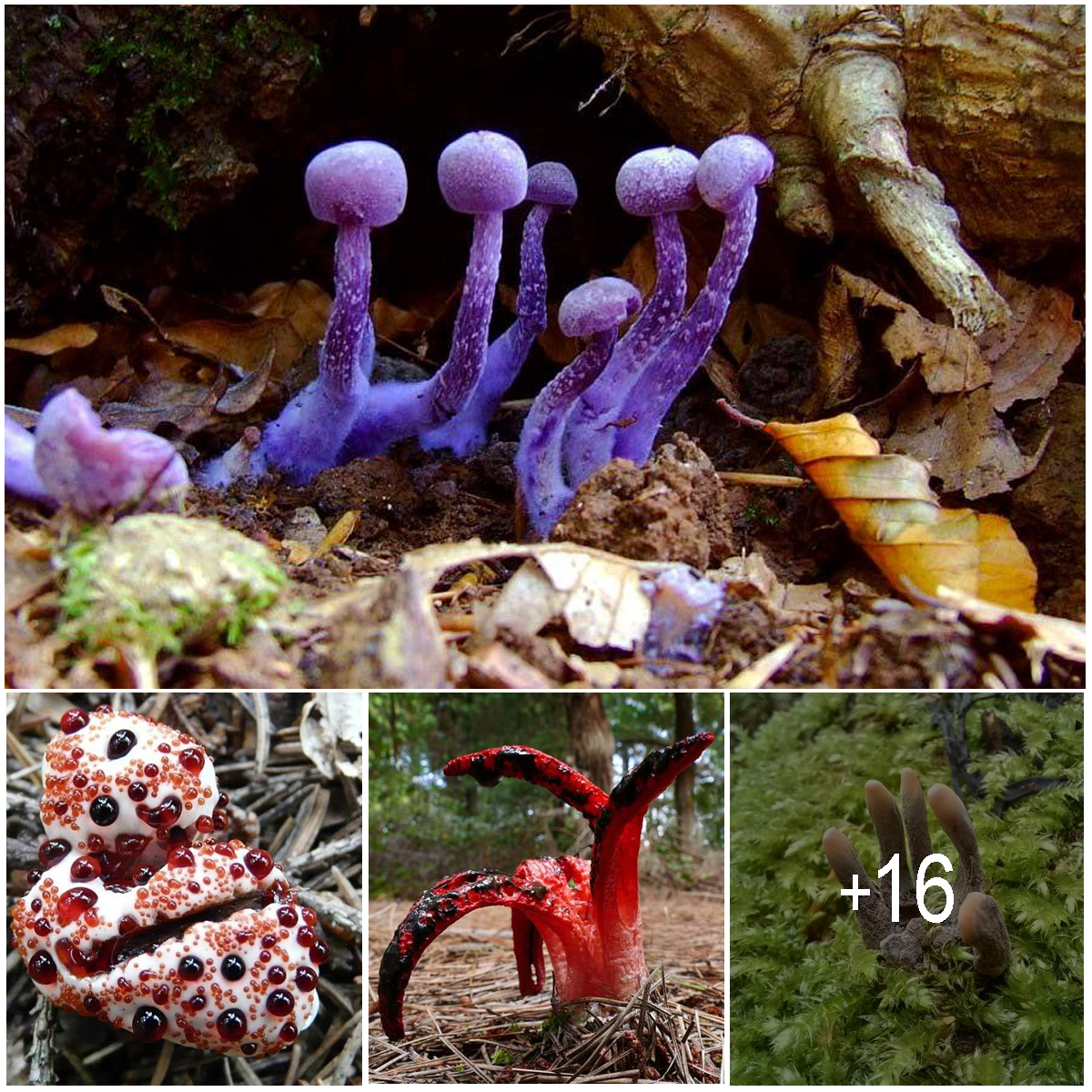
Với khoảng 14.000 cây nấm được mô tả hiện đang sinh sống trong các tầng rừng ẩm ướt, thân cây mục nát và đống phân, chắc chắn sẽ có một số giống trông kỳ lạ. Một số khởi hành hoàn toàn từ hình bóng con cóc — bộ mũ tròn khuôn mẫu trên đỉnh thân cây — với những chiếc gai dài như lông, hình vỏ quạt, bàn đạp kiểu hoa và thiết kế lưới. Những người khác thiếu sự độc đáo trong hình dạng là tuyệt vời trong màu xanh hoàng gia, chàm và thậm chí cả màu phát quang sinh học.
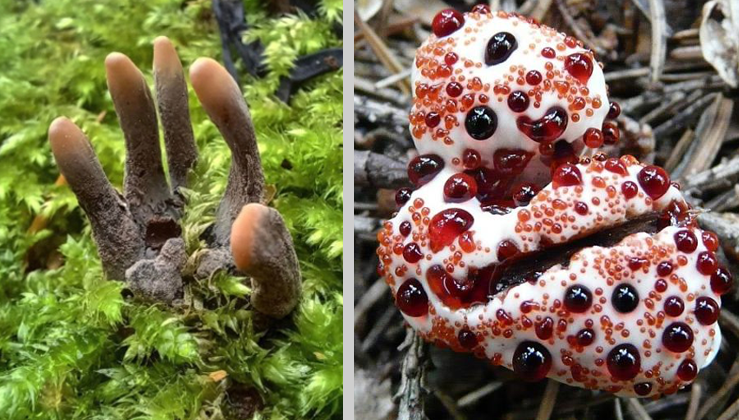
Nhiều loại nấm kỳ lạ nhất trên hành tinh cực kỳ khó nắm bắt. Đây là điều bạn có thể không biết: nấm là những anh hùng vô danh của việc chăm sóc cây và cây. Một loại nấm cụ thể, nấm Mycorrhizal, (nói rằng nhanh gấp ba lần!) tạo thành mối quan hệ cộng sinh thiết yếu với rễ cây. Nấm Mycorrhizal giúp rễ cây và cây bụi tìm thấy nước và chất dinh dưỡng. Đổi lại, rễ cung cấp cho nấm carbon, carbohydrate và các chất dinh dưỡng khác. Bạn muốn tìm hiểu thêm về nấm? Dưới đây là 16 sự thật về nấm yêu thích của chúng tôi.
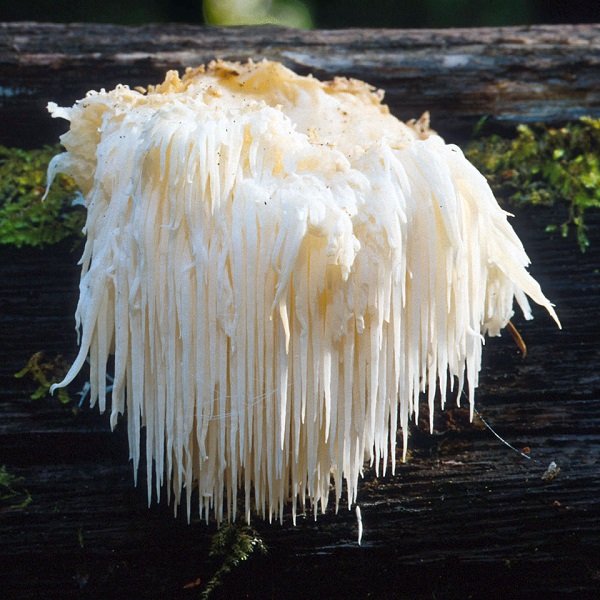
Nấm răng râu (Hericium erinaceus): Nấm răng có râu trông giống như cây lau nhà và dường như có vị như tôm hùm. Được gọi là nấm răng râu hoặc bờm sư tử, Hericium erinaceus là một loại nấm dược liệu ăn được thuộc nhóm nấm răng, là những loại nấm có những đường vân giống như răng ở mặt dưới của mũ. Các bào tử cũng được sản xuất trong răng trước khi được thả ra để sinh sản. Điều thú vị là những rặng núi này luôn phát triển vuông góc với Trái đất.
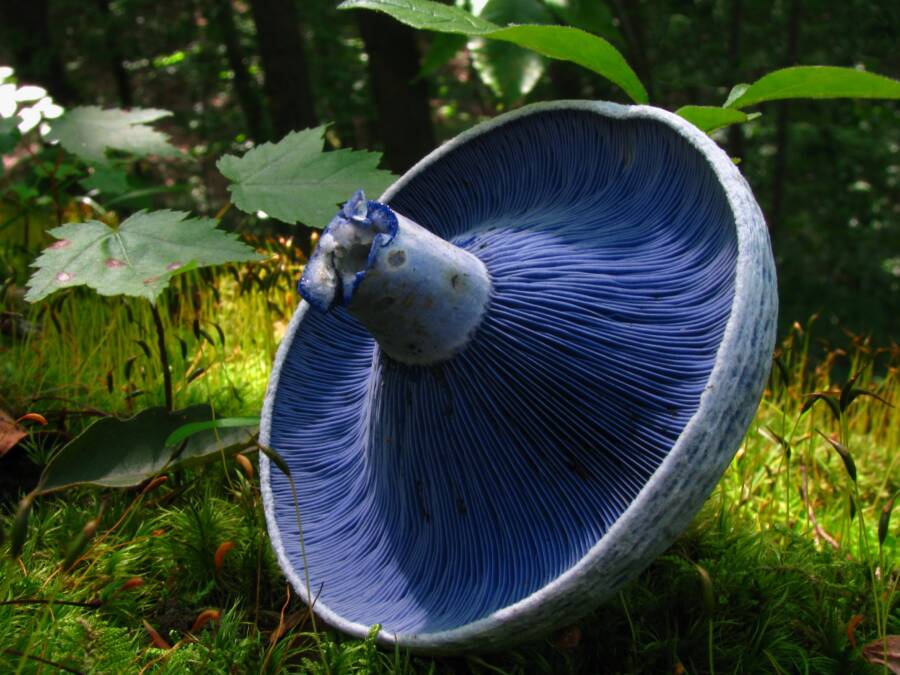
Indigo Milk Cap (Lactarius indigo): Nấm chàm Lactarius có tên là “Indigo Milk” từ chất lỏng màu trắng đục mà nó tiết ra khi cắt bằng dao. Loại nấm kỳ lạ này mọc ở Bắc và Trung Mỹ và thường được đặc trưng bởi màu xanh bạc. Mặc dù, khi loại nấm kỳ lạ này già đi, màu sắc của nó chuyển sang màu xám hơn, xanh lục. Mũ sữa chàm mọc rải rác hoặc theo nhóm, trên đất hoặc gỗ sồi hoặc thông. Chúng thường được tìm thấy từ tháng Bảy đến tháng Mười, và giống như nhiều loại nấm khác trong danh sách này, chúng có mối quan hệ cộng sinh với những cây mà chúng thường nảy mầm. Cây ưa thích của họ có xu hướng là sồi hoặc thông. Do sắc tố rực rỡ của loại nấm kỳ lạ này, nó cũng được biết là được sử dụng làm thuốc nhuộm cho hàng dệt may.
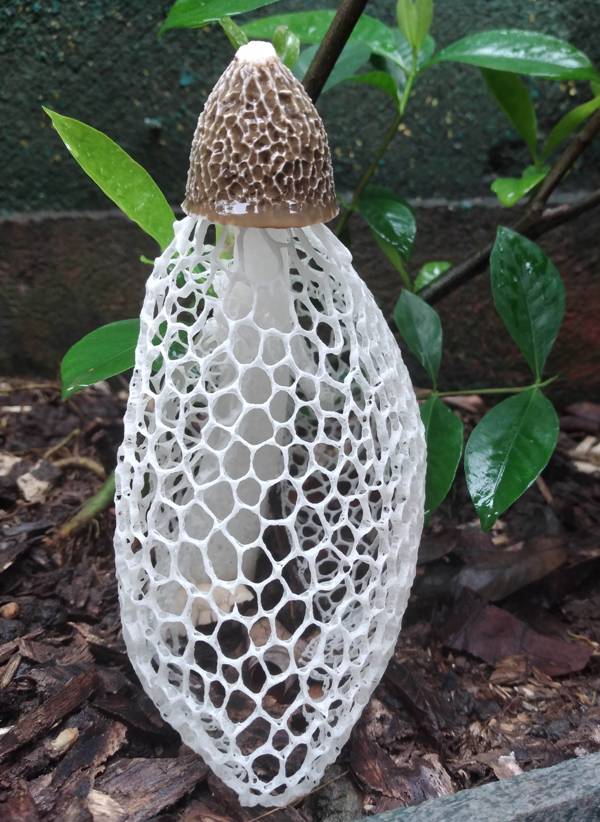
Veiled Lady (Phallus indusiatus): While the dramatic lacy skirt of the veiled lady mushroom is what initially attracts the eye, this sophisticated fungus actually uses its cap to draw attention, too. It is coated in a greenish-brown slime that contains spores—and that same slime attracts flies and insects that help disperse the spores. The delicate Phallus indusiatus can be found in gardens and woodlands in southern Asia, Africa, the Americas, and Australia.
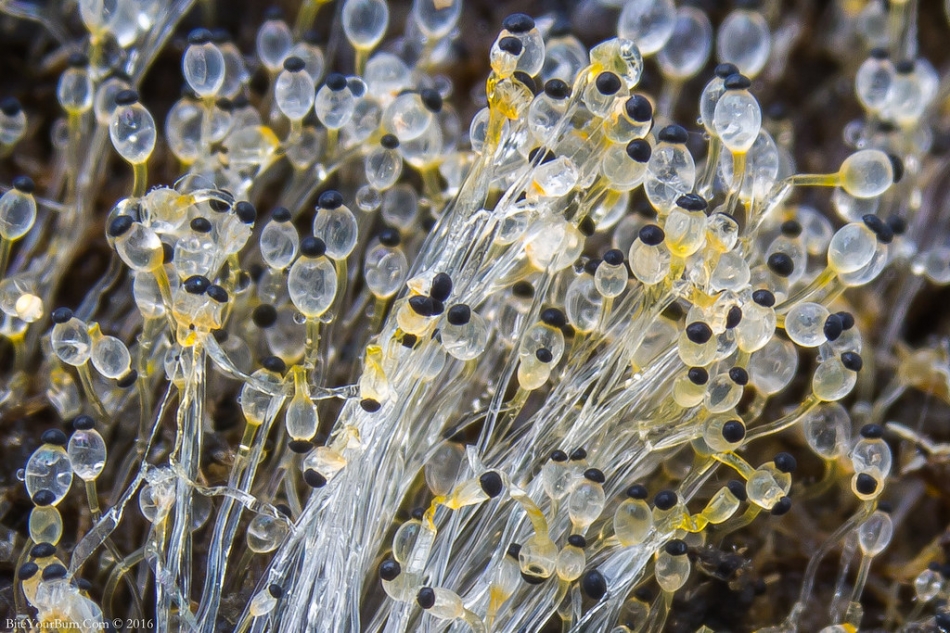
Dung Cannon (Pilobus crystallinus): The name of the Dung Cannon mushroom is a fairly straightforward, albeit weird, one. First, these strange mushrooms mainly originate in — and love to grow on — animal feces. Straightforward enough, sure. But here’s where it gets interesting: this fungus is actually the fastest living thing on the planet. Just like a true cannon, this fungus launches spores faster than a bullet from a gun. The action is invisible to the naked eye, but the travel rate for a Dung Cannon spore is about 82 feet per second, though each ejaculation usually only travels about six feet. In terms of g-force, that’s over 180,000 g’s. For reference, normal humans can withstand no more than 9 g’s at a time — and only for a few seconds. As a result, they are often eaten by grazing animals and pass through their digestive tracts, starting their growth cycle over again but inside the animal feces this time.
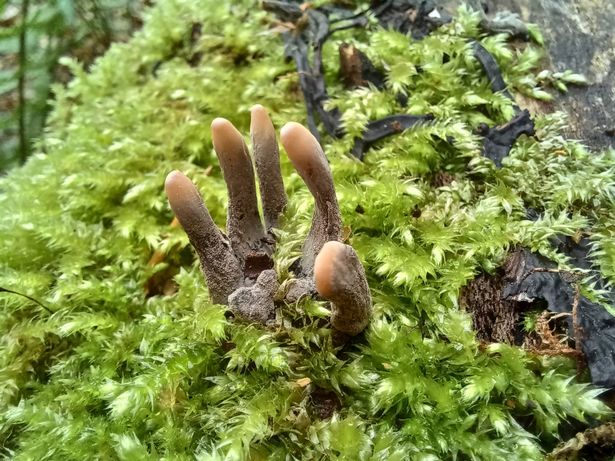
Xylaria Polymorpha Mushroom (Dead Man’s Finger): The Dead Man’s Finger is an ascomycetous fungus (producesspores in sac-like cells called ascus), and goes through a few costume changes from spring through late fall and early winter. Individual “fingers,” or club-shaped structures, are commonly found in groups of at least three to six and emerge in the spring. Initially, these fingers, or communal fruiting bodies that are also called stroma, are just a few inches long, white to dark grayish in color and the conidiaspores concentrate at the “fingertips” during this asexual reproductive stage. The conidia are blown or washed away as the mushrooms mature. (The Xylaria Polymorpha Mushroom that Mike discovered ( Image: Kennedy News/@northwalesmushrooms)
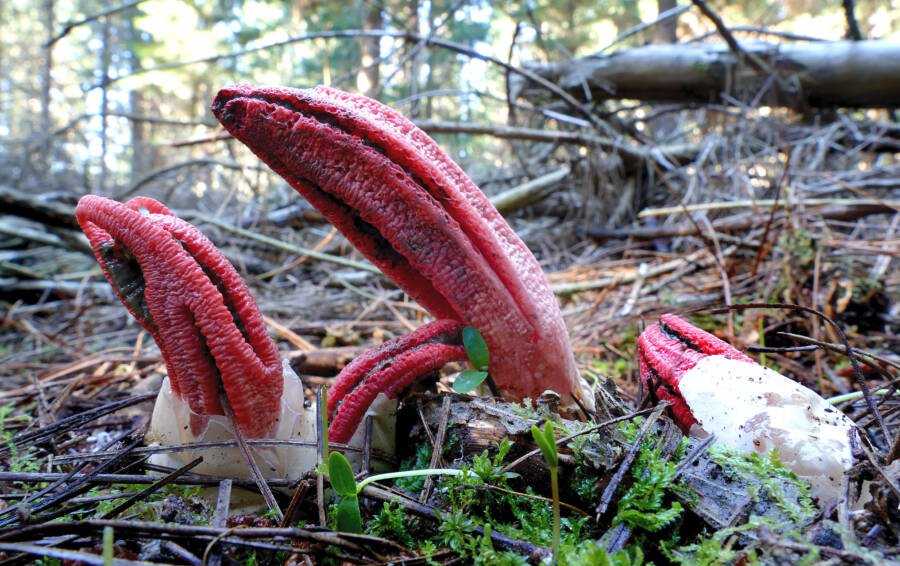
Devil’s Fingers (Clathrus archeri): Among the most bizarre mushrooms, Devil’s Fingers certainly ranks high. This is a fungus that begs to be noticed and not just because of its vibrancy but also because of its putrid stink. Indeed, meet the Devil’s Fingers, a menacing name for a fungus that smells of rotting meat. The red, starfish-like “fingers” that adorn this weird mushroom commonly number from four to eight and burst forth from a small, light-colored ball of mushroom flesh commonly compared to an egg.
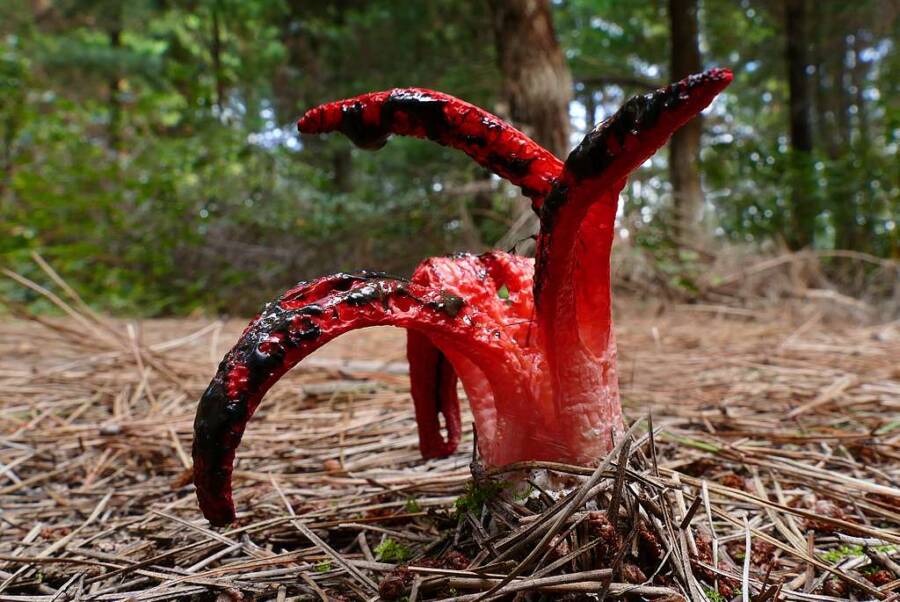
The grotesque-looking fingers are coated in a smelly slime that attracts insects that land on the mushrooms and then spread the weird mushroom’s spores when they fly off again. It seems that Devil’s Fingers are quite good at reproducing as they reached the United Kingdom by way of Australian weapons. Indeed, though Devil’s Fingers were first recorded in Britain, it is believed that they originated in Australia or New Zealand and reached Europe by way of some spores that might have clung to munitions in transit. In Australia, the bizarre fungus is called Octopus Stinkhorn, and in parts of the United States, it is commonly called Octopus Fungus.
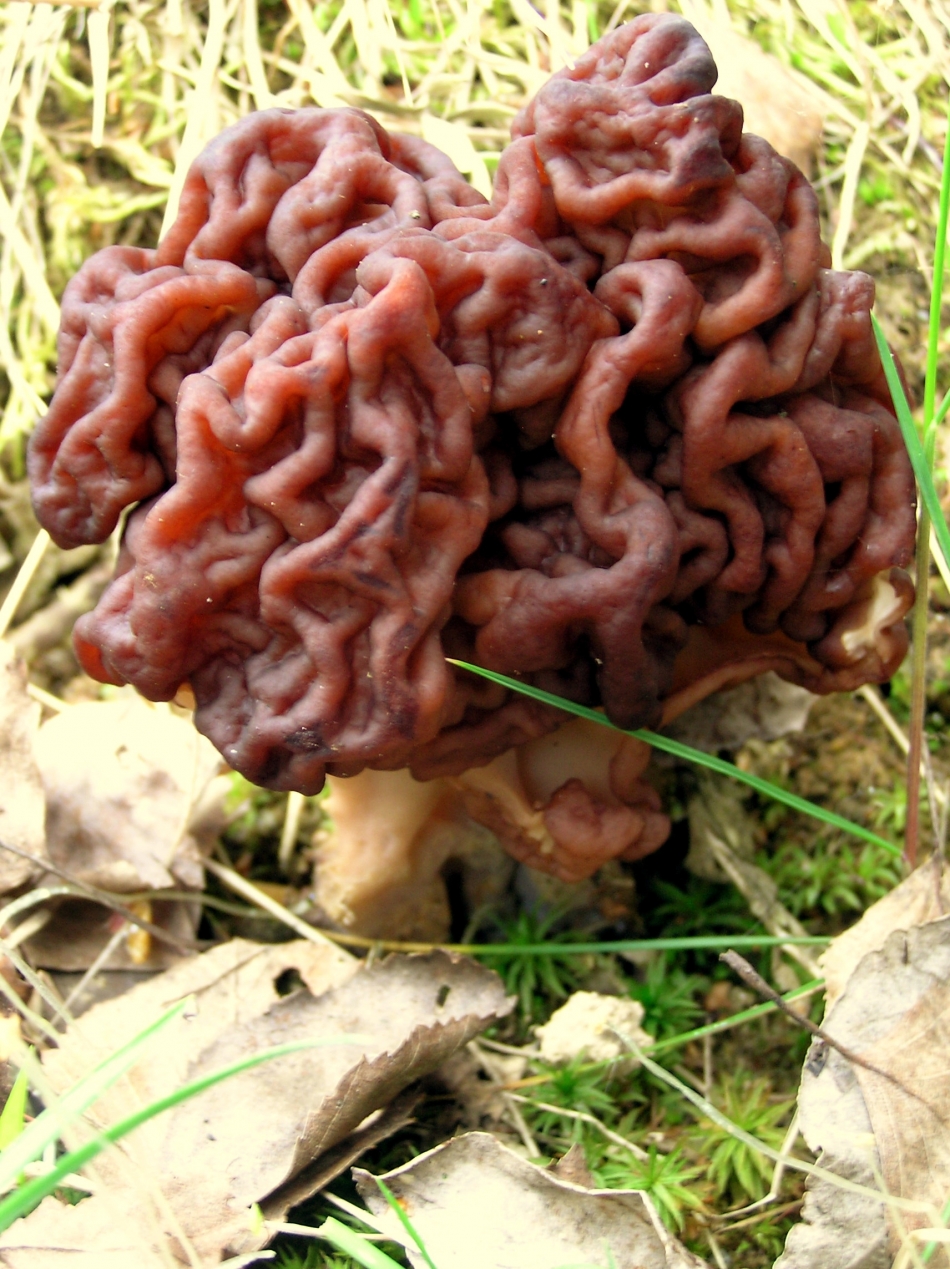
Brain Mushroom (Gyromitra esculenta): Also called a false morel, brain mushrooms grow caps that resemble the shape of a brain and its sulci. Though most concentrated in Britain and Ireland, the obscurely shaped toadstool can also be found throughout Europe and North America. It’s especially partial to growing in the coniferous woodlands of mountainous regions. They can sometimes be mistaken for true morels (hence the nickname) because they share the trait of irregular lobes. However, the impersonator has more lobes and none of the true morel’s signature craterlike pits.
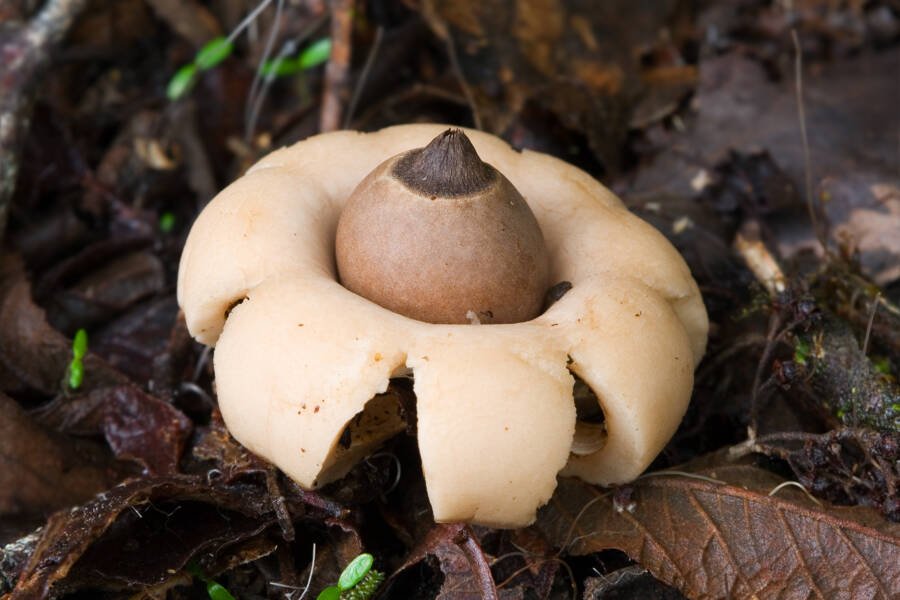
Rounded Earthstar (Geastrum saccatum): Though these mushrooms are quite common, they are bizarre-looking due to their uncanny resemblance to the classic peanut butter blossom cookie. However, unlike the delicious baked goods, the Rounded Earthstar is bitter and largely inedible. Geastrum saccatum,, as it is known in the scientific community, is found globally, growing on rotten wood. In Brazil, its common name translates to “star of the land” for its distinctive star-like cap and skirt. The base arms of this mushroom often crack as they bend back to expose the hole that releases the spores. The rest of the body gradually turns a dark brown in color as the spores, which are rounded and have warts, mature.
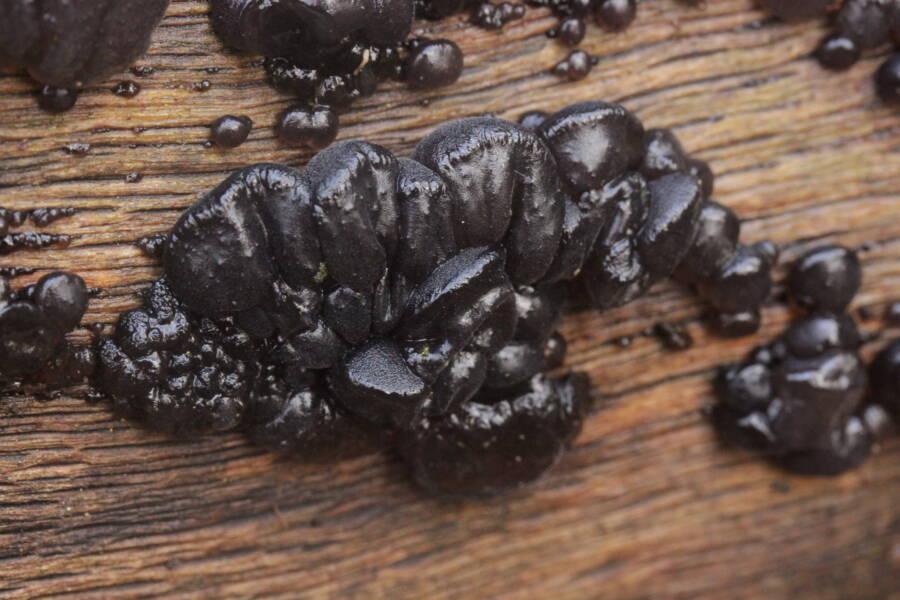
Black Witches’ Butter (Exidia glandulosa): Black Witches’ Butter. Jean-Baptiste Francois Bulliard, a French naturalist, first recorded this strange fungus in 1789. Named as such for its color and greasy consistency in wet weather, Black Witches’ Butter appears on dead hardwood during the autumn and winter seasons. Alternately, in hot and dry weather, these mushrooms appear more greenish-brown and crusty.
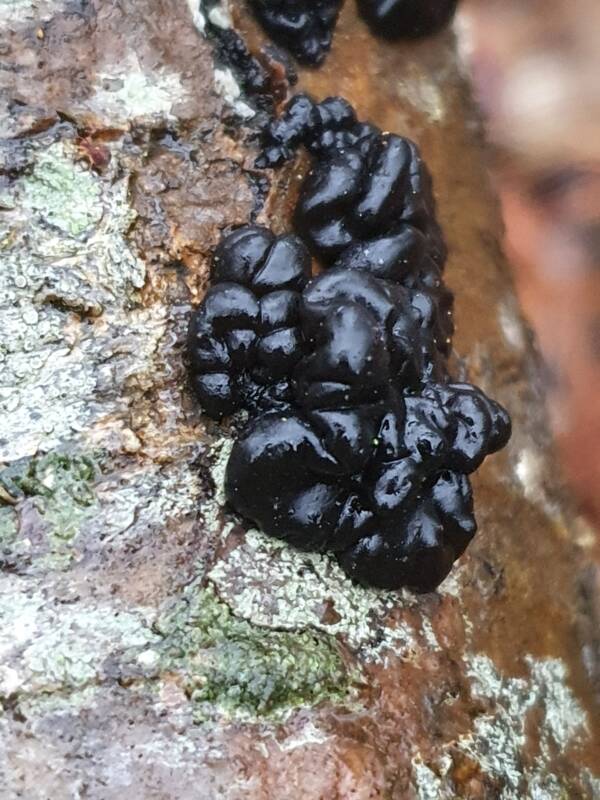
Also known as Black Jelly Roll, this strange mushroom might have magical powers. Growing singly or in clusters on dead trees — typically oak, hazel, or beech — this bizarre mushroom appears gelatinous in its consistency. It appears to melt in wetter weather and hardens when dry, meaning it is a hardy grower most everywhere on the globe, though particularly in North America and Europe. Also known as Black Jelly Roll or Warty Jelly Fungus for its appearance, another possible origin for its witchier name may be in its supposed power in counteracting witchcraft if thrown into a fire.
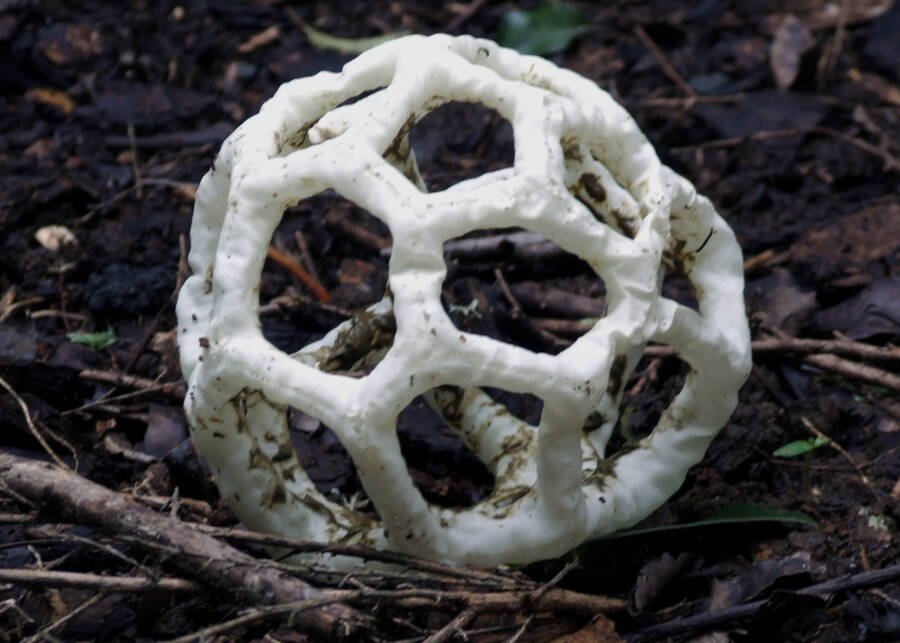
Basket Fungi (Ileodictyon cibarium): Also called “stink cage,” these hollow, structural mushrooms known as basket fungi are a hardy sort. Known as Basket Fungi for their concave shapes, these mushrooms grow in woody debris, cultivated soil, or even lawns. Found in Australia, New Zealand, South Africa, and Chile, this fungus was known to ancestors of the Maori, the indigenous people of New Zealand, by over 35 different names —one of them being “ghost droppings.” Like many other strange fungi, the stink cage has a smelly, slimy layer that attracts flies who then spread their spores. When they’re young, these bizarre mushrooms start out in an egg-shaped body that is usually white or grayish in color.
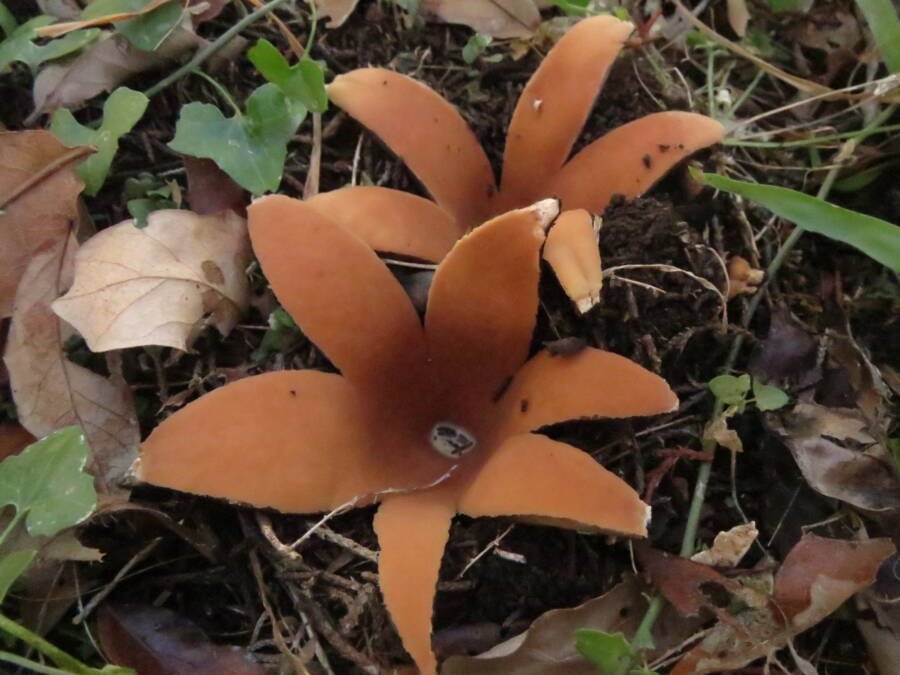
The Devil’s Cigar (Chorioactis geaster): The body of this extremely rare mushroom looks like a fuzzy brown or black cigar at first. But when this bizarre fungus reaches maturity, it peels itself back like a banana — or as if it were a “blossoming flower of death.” When it peels back, the strange fungus forms a star-like shape of four to seven rays. Inside the body, its spore-bearing tissue is anywhere from white to brown, depending on its age. When it opens, a distinct hissing sound can be heard — along with a smoky cloud of spores. This extremely rare mushroom has a very odd distribution; you can find it only in Texas, Oklahoma, and Japan. So far, scientists can’t say for sure what these different but specific locales have in common to host this fungus.
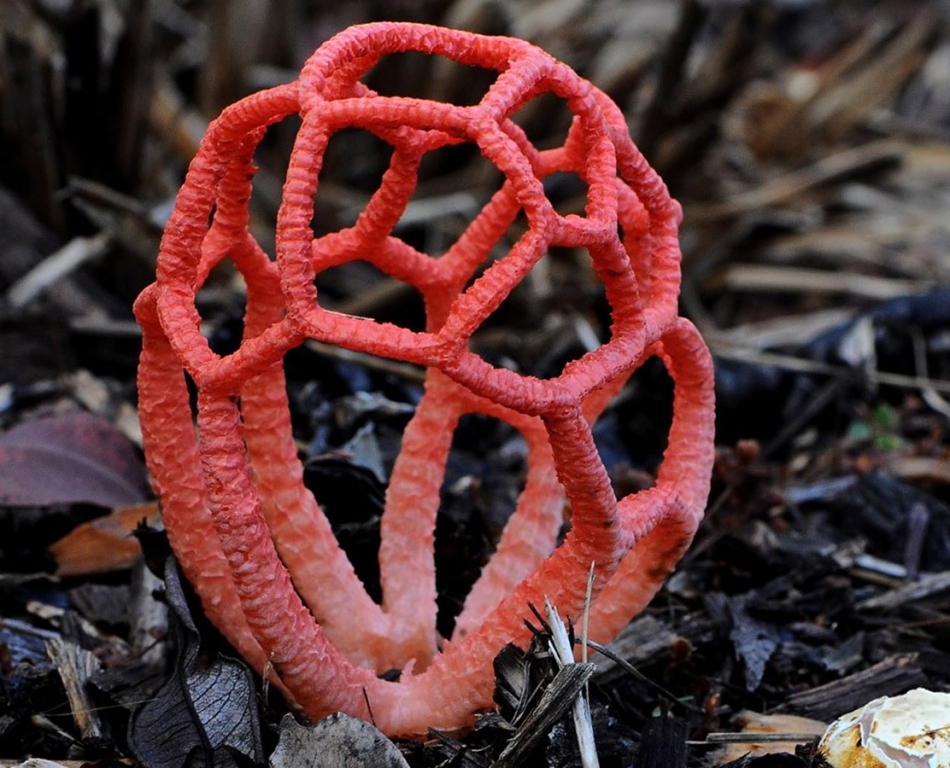
Latticed Stinkhorn (Clathrus ruber): The latticed stinkhorn, or basket stinkhorn, is called so because of its spongelike exterior, resembling a red cage. Its appearance is only half of what makes the mushroom exceedingly strange, though: It also has a foul smell, hence the “stink” in its name. These redhea
ded mushrooms can be found growing in leaf litter, on grassy places, on garden soil, or in mulches in hot places, such as the Mediterranean and coastal North America.
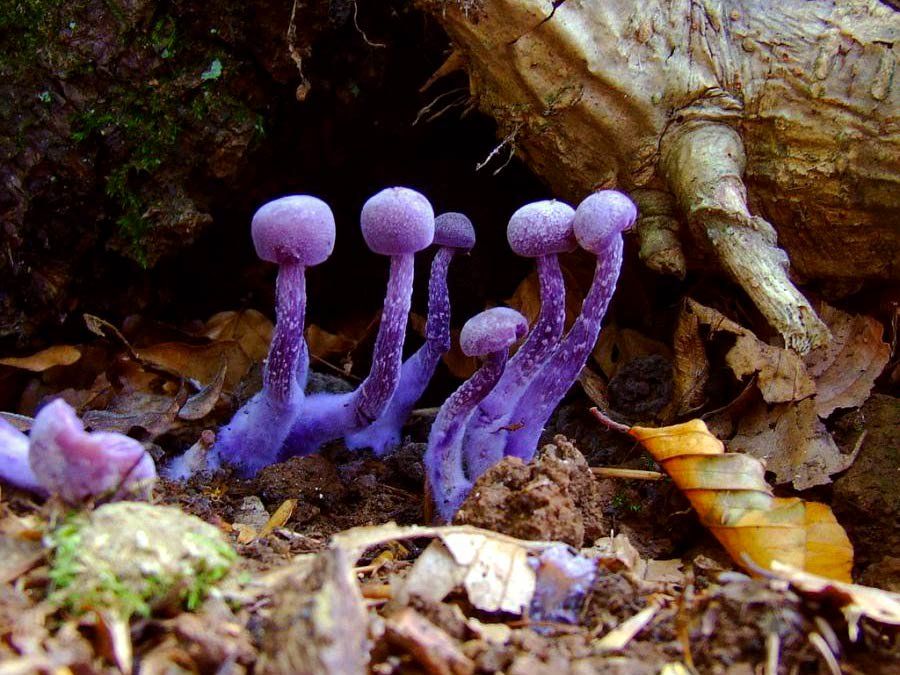
Amethyst Deceiver (Laccaria amethystina): Its vivid purple hue makes the amethyst deceiver decidedly strange. Like the bleeding tooth, these colorful anomalies lose their defining quality with age. As they grow older, they fade in color and wither—hence the name “deceiver”—but they’re splendidly bright and easy to spot in the deciduous and coniferous forests of temperate zones in North America, Central and South America, Europe, and Asia when they’re fresh.
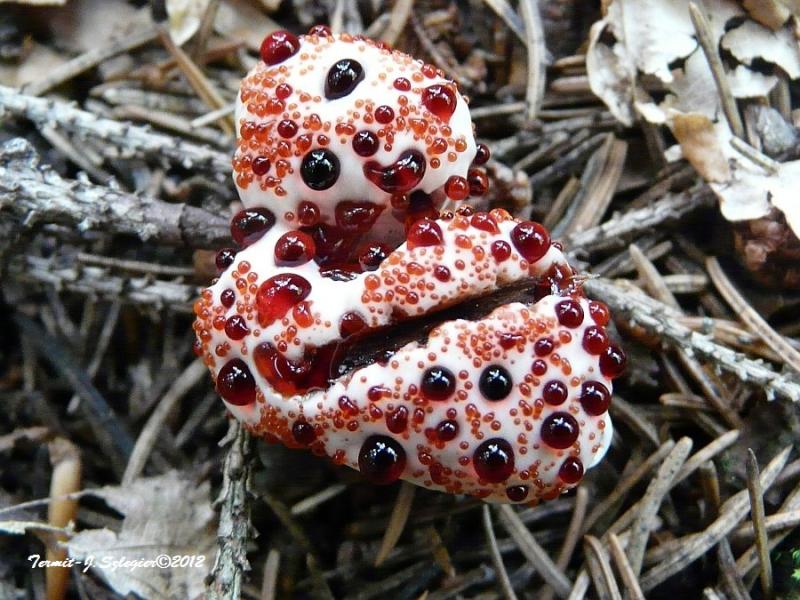
Loại nấm kỳ lạ trông giống như một chiếc răng chảy máu (Hydnellum pecki): Răng chảy máu chắc chắn là một loài nấm kỳ quái, và vẻ ngoài của nó cũng khá đáng lo ngại. Được tìm thấy ở nhiều nơi trên thế giới và không được ăn, cơ thể của một cây nấm răng chảy máu trẻ “chảy máu” một sắc tố có chứa đặc tính chống đông máu, như chất làm loãng máu. Mẫu vật cũ có màu nâu. Chất lỏng màu đỏ sền sệt chảy ra từ loại nấm kỳ lạ này thực sự là một loại nhựa cây. Nó được tạo ra bởi một quá trình gọi là guttation, trong đó đất xung quanh nấm trở nên rất ẩm ướt và có thể buộc nước vào rễ của nấm thông qua thẩm thấu. Điều này tạo ra đủ áp lực trong nấm để chất lỏng được vắt ra khỏi nó.
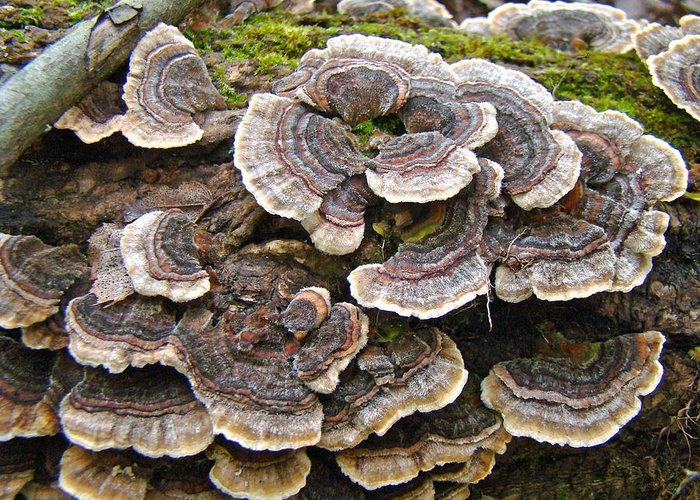
Đuôi gà tây (Trametes versicolor): Được đặt theo tên của một loài chim mặt đất nổi tiếng ở Bắc Mỹ, đuôi gà tây thậm chí còn trang trí hơn cả tên gọi của nó. Màu sắc của nó — đôi khi nâu gỉ, xám hoặc đen — thay đổi tùy theo tuổi và vị trí của nó. Thỉnh thoảng, bạn thậm chí sẽ bắt gặp đuôi gà tây với màu xanh lá cây tuyệt đẹp đặc trưng trong các vòng màu đồng của chúng, tạo ra cầu vồng màu sắc trên nấm hình vỏ ngao.